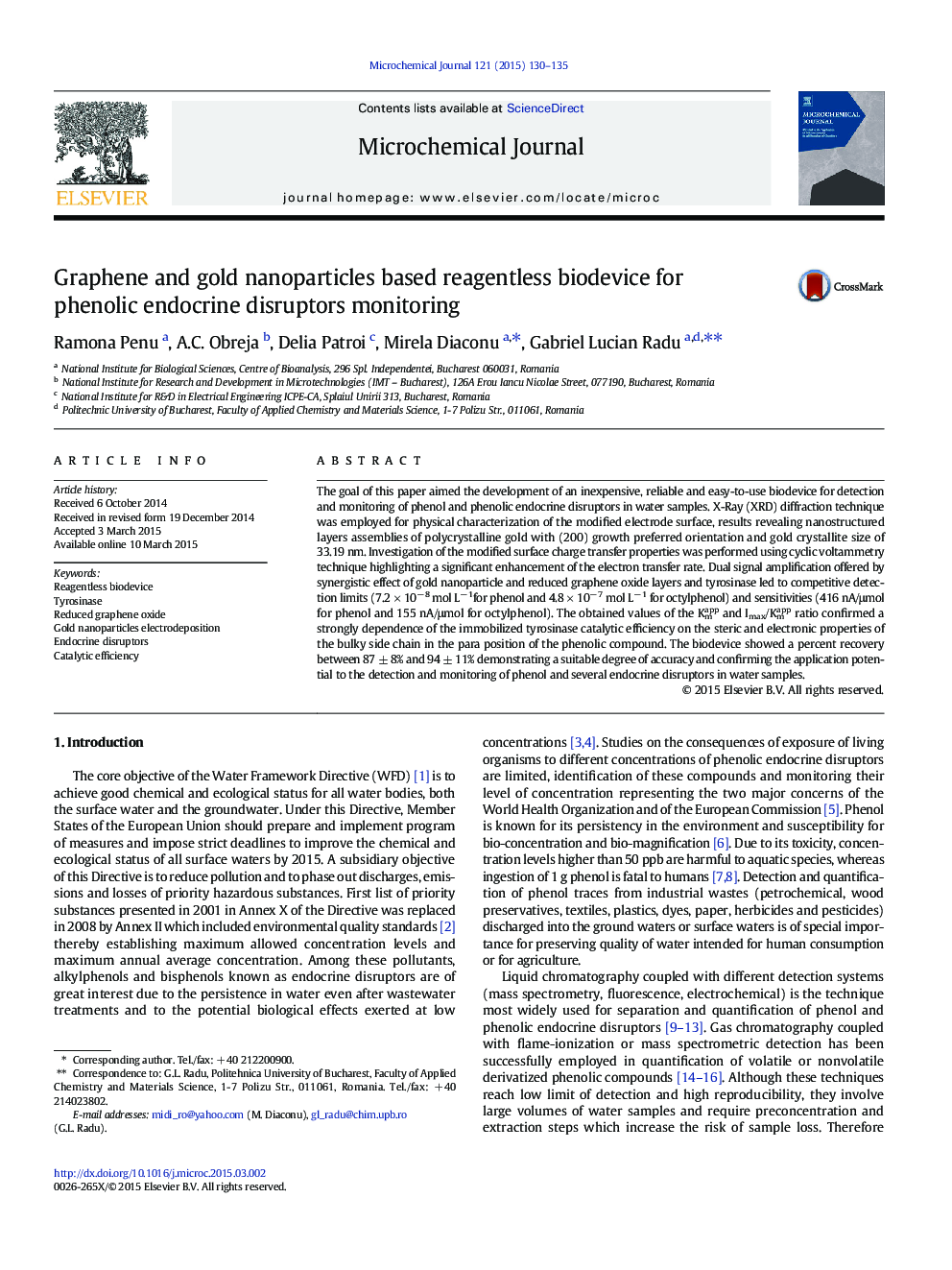| Article ID | Journal | Published Year | Pages | File Type |
|---|---|---|---|---|
| 1227686 | Microchemical Journal | 2015 | 6 Pages |
•Reagentless biodevice based on reduced graphene oxide and gold nanoparticles layer•Phenolic endocrine disruptors monitoring in water samples•XRD characterization of modified electrode surfaces•Matrix effect evaluation
The goal of this paper aimed the development of an inexpensive, reliable and easy-to-use biodevice for detection and monitoring of phenol and phenolic endocrine disruptors in water samples. X-Ray (XRD) diffraction technique was employed for physical characterization of the modified electrode surface, results revealing nanostructured layers assemblies of polycrystalline gold with (200) growth preferred orientation and gold crystallite size of 33.19 nm. Investigation of the modified surface charge transfer properties was performed using cyclic voltammetry technique highlighting a significant enhancement of the electron transfer rate. Dual signal amplification offered by synergistic effect of gold nanoparticle and reduced graphene oxide layers and tyrosinase led to competitive detection limits (7.2 × 10− 8 mol L− 1for phenol and 4.8 × 10− 7 mol L− 1 for octylphenol) and sensitivities (416 nA/μmol for phenol and 155 nA/μmol for octylphenol). The obtained values of the Kmapp and Imax/Kmapp ratio confirmed a strongly dependence of the immobilized tyrosinase catalytic efficiency on the steric and electronic properties of the bulky side chain in the para position of the phenolic compound. The biodevice showed a percent recovery between 87 ± 8% and 94 ± 11% demonstrating a suitable degree of accuracy and confirming the application potential to the detection and monitoring of phenol and several endocrine disruptors in water samples.
